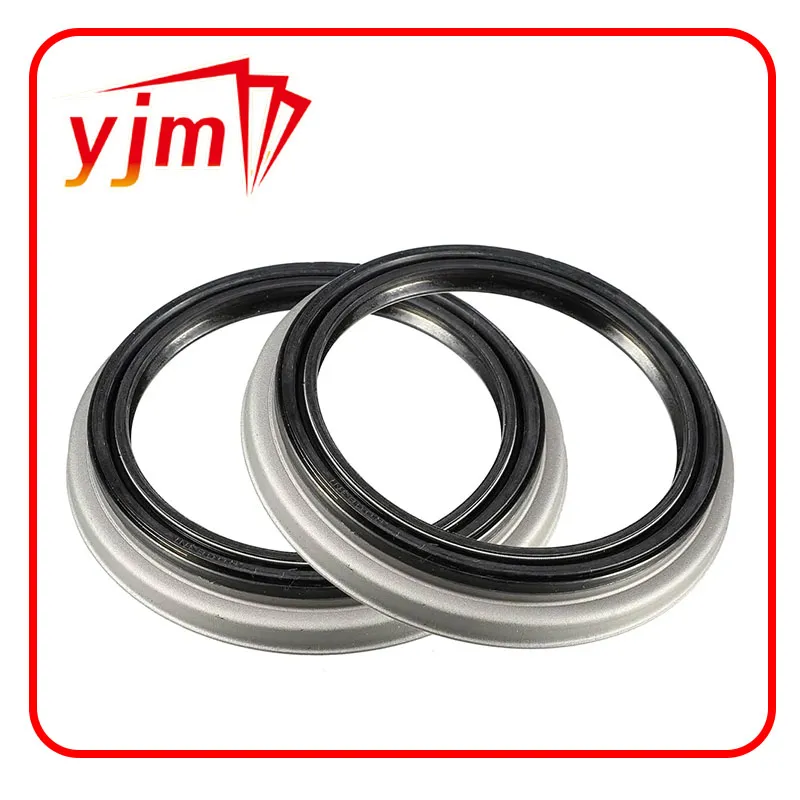power steering cap seal
Understanding Power Steering Cap Seals Importance and Maintenance
Power steering systems have become an integral part of modern vehicles, providing drivers with the ease and comfort of steering with minimal effort. A crucial component of these systems is the power steering cap seal, a small yet vital part that helps maintain the effectiveness of power steering fluid. Understanding the role of the power steering cap seal, its importance, and the maintenance necessary to ensure long-term functionality can significantly enhance both vehicle performance and safety.
What is a Power Steering Cap Seal?
The power steering cap seal is typically located on the reservoir cap of the power steering fluid system. It serves as a barrier that prevents dust, debris, and moisture from entering the reservoir while also ensuring that the pressurized fluid does not leak out. Made from durable materials such as rubber or silicone, these seals are designed to withstand both temperature variations and the chemical properties of power steering fluids.
Importance of Power Steering Cap Seals
1. Fluid Integrity The primary function of the power steering cap seal is to maintain the integrity of the power steering fluid. Contaminants like dirt and moisture can severely impact the hydraulic function of the steering system, leading to premature wear and potential system failure. A good seal ensures that the fluid remains clean and capable of providing the necessary pressure for smooth steering.
2. Pressure Maintenance Power steering systems rely on pressurized fluid to function correctly. A properly sealed reservoir prevents fluid from leaking, thus maintaining the required pressure within the system. If the seal fails, fluid levels can drop, leading to reduced steering efficiency and increased effort required to steer the vehicle. This can result in a less responsive driving experience and potential safety hazards while on the road.
3. Cost-Effectiveness Regularly checking and replacing worn or damaged power steering cap seals can save vehicle owners significant repair costs. A simple seal replacement is less expensive than a complete power steering system overhaul, which may be necessary if contaminants are allowed to enter the system.
power steering cap seal

Maintenance of Power Steering Cap Seals
Maintaining the power steering cap seal is relatively straightforward but requires regular attention to ensure the entire power steering system operates smoothly. Here are some key maintenance tips
1. Regular Inspection As part of routine vehicle maintenance, inspect the power steering cap and seal for signs of wear, such as cracks or tears. A damaged seal should be replaced immediately to prevent fluid leaks.
2. Fluid Levels Check Regularly check the power steering fluid level in the reservoir. If the fluid is low, it may indicate a leak, potentially caused by a faulty cap seal. Top off the fluid as needed, but investigate the cause of any low levels.
3. Use Correct Fluid Always use the manufacturer's recommended type of power steering fluid. Using incorrect fluid can degrade the seal material, leading to early failure.
4. Professional Assistance If you notice any steering issues or suspect that the power steering cap seal may be compromised, consult a professional mechanic. They can diagnose the problem accurately and provide the necessary repairs or replacements.
Conclusion
The power steering cap seal, though small, plays an essential role in the operation of a vehicle’s power steering system. Regular maintenance and timely replacement of this seal can prevent potential steering issues and safeguard against the introduction of contaminants that can lead to system failure. By understanding the importance of the power steering cap seal and taking proactive measures to maintain it, vehicle owners can ensure a smooth, safe, and efficient driving experience for years to come.
-
Understanding the Front Main Engine Seal: Purpose, Maintenance, and Installation
News Jul.29,2025
-
Understanding O-Rings and Seal Rings: Types, Applications, and Custom Solutions
News Jul.29,2025
-
Understanding Crankshaft Oil Seals: Rear Seals, Pulley Seals, and Their Role in Engine Integrity
News Jul.29,2025
-
The Importance of Front and Rear Crankshaft Seals in Engine Performance and Oil Management
News Jul.29,2025
-
Crank Oil Seals: Functions, Types, and Cost Considerations in Engine Maintenance
News Jul.29,2025
-
A Comprehensive Guide to O-Rings and Seals: Types, Materials, and Global Applications
News Jul.29,2025
-
Mastering Diesel and Performance Engine Maintenance: A Guide to Critical Oil Gaskets
News Jul.28,2025
Products categories















